Healing Stages After Dental Implant Placement: How Long it Takes?
Dental Care
Dental implants have revolutionized dentistry, offering a permanent solution for missing teeth that closely mimics the look and function of natural teeth. However, the success of a dental implant procedure is not solely dependent on the surgical placement of the implant. The healing stages after the implant placement are crucial for ensuring the long-term success and stability of the dental implant.
Understanding the different healing stages of dental implants is essential for patients to have realistic expectations and to properly care for their implants post-surgery, from the initial osseointegration process, where the implant fuses with the jawbone, to the final placement of the permanent restoration, each stage plays a vital role in the overall success of the implant. Read on to learn more.
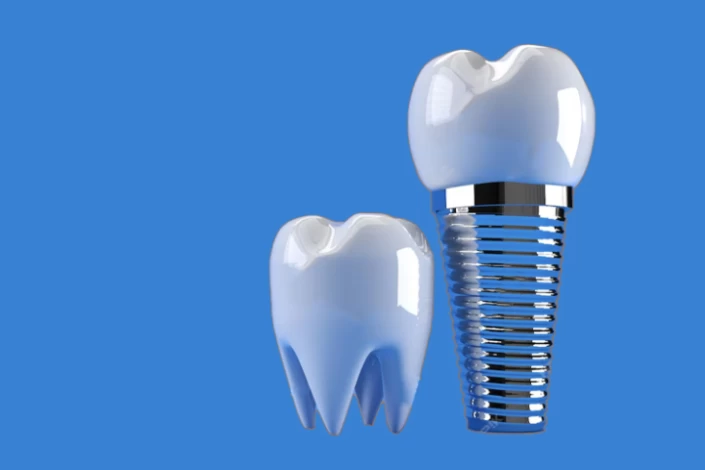
What Are Dental Implants?
Dental implants are artificial tooth roots surgically placed into the jawbone to support replacement teeth or dental prostheses, such as crowns, bridges, or dentures. They are made of biocompatible materials, typically titanium, that fuse with the jawbone through osseointegration. This fusion provides a stable foundation for the replacement teeth and helps prevent bone loss in the jaw.
Dental implants are considered a durable and long-lasting solution for missing teeth because they closely resemble the structure and function of natural teeth. They can improve oral health, restore chewing function, enhance aesthetics, and prevent shifting of adjacent teeth. Dental implants are versatile and can replace a single missing tooth, multiple teeth, or even a full arch of teeth.
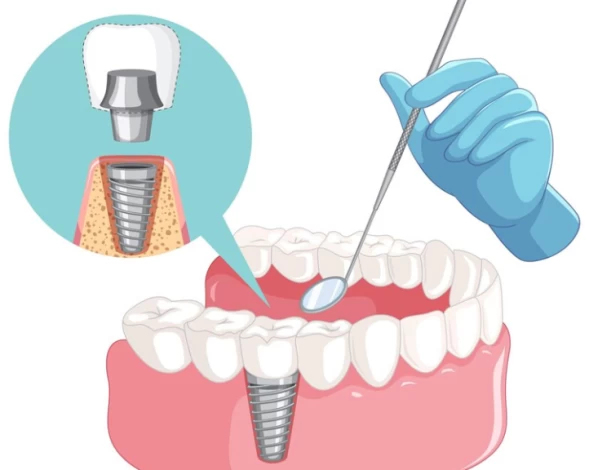
Dental Implant Healing Stages: A Step-by-Step Guide
The healing process after getting dental implants typically involves several stages, each of which plays a crucial role in the success of the implant procedure. Here is a step-by-step guide to the dental implant healing stages:
Immediate Post-Surgical Phase (First Week After Dental Implants)
Day 1-3
You may experience some swelling, discomfort, and minor bleeding during this time. This is normal and can be managed with pain medications prescribed by the dentist.
It is essential to follow post-operative care instructions provided by the dentist, including avoiding strenuous activities and sticking to a soft diet to allow the surgical site to heal.
Day 4-7
Days 4 to 7 after dental implant surgery mark a critical phase in the initial bone stabilization process. Here is what you can expect during this period:
- You may notice reduced swelling and discomfort compared to the immediate post-operative period. Your body's natural healing processes are at work, helping to minimize these symptoms.
- A blood clot forms at the surgical site to protect the underlying bone and tissues and aid in healing. To avoid disturbing this clot, follow your dentist's instructions on proper care and oral hygiene.
- During this period, the bone around the implant site starts to heal and stabilize. This initial bone stabilization is crucial for supporting the implant fixture and initiating the osseointegration process.
- You should follow a soft diet during days 4-7 to avoid putting excessive pressure on the implant site. This helps promote healing and prevents any disruption to the bone stabilization process.
- You may still experience some mild discomfort during this stage, which your dentist recommends managing with prescribed pain medications or over-the-counter pain relievers.
Good oral hygiene practices, such as gentle brushing and rinsing with a prescribed mouthwash, are important to keep the surgical site clean and prevent infection.
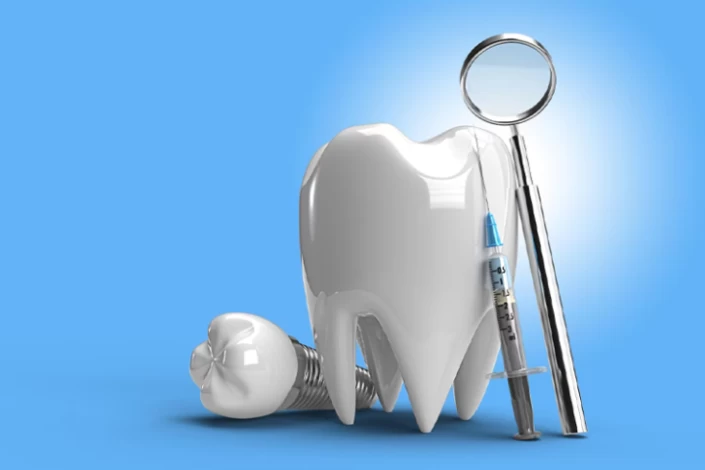
Stage 1: Osseointegration - Week 2 to Month 6 after Dental Implant
Osseointegration is crucial for fusing the dental implant with the jawbone bone. During this period, the jawbone gradually adheres to the implant surface, creating a solid foundation for the prosthetic tooth or crown.
Here are some important aspects to consider during the osseointegration stage:
- Immediately after the dental implant surgery, the body begins to heal and regenerate the tissues around the implant site. The gum tissue will recover and seal the area where the implant was placed, protecting it from infections.
- Good oral hygiene practices are essential during this stage to minimize the risk of infection and ensure a successful osseointegration. Gentle brushing, flossing around the implant, and rinsing with an antibacterial mouthwash are recommended.
- Regular check-ups with the dentist or oral surgeon are necessary to monitor the progress of osseointegration. These appointments may include X-rays to evaluate the bone's integration with the implant and determine if any adjustments or additional treatments are needed.
- Sometimes, a temporary crown or denture may be attached to the implant during this healing period. This helps preserve the gum's aesthetics, function, and contour while osseointegration takes place.
- Certain lifestyle habits such as smoking or excessive alcohol consumption can slow down the osseointegration process. It is recommended to quit smoking and limit alcohol intake to promote better healing and implant success.
- The integration of the implant with the jawbone relies on its density and quality. If the bone lacks density or volume, bone grafting or other augmentation procedures might be necessary before or during the implant placement to ensure a strong implant-bone bond.
Stage 2: Restoration Placement (Abutment Placement) -Months 3-7 after Dental Implant
The next step involves the placement of the abutment. An abutment is a connector that attaches to the implant and supports the final restoration. It is often made of titanium or zirconia and is customized to fit your unique dental anatomy. During this procedure, a small incision is made to expose the dental implant, and the abutment is screwed into the implant. The gum tissue is then sutured around the abutment, and a temporary crown or restoration may be placed on top for aesthetic purposes.
After abutment placement, there is typically a healing period of about 2-4 weeks to allow the gum tissue to heal and form a natural contour around the abutment. During this time, the dental laboratory may also fabricate the final restoration based on impressions of your mouth.
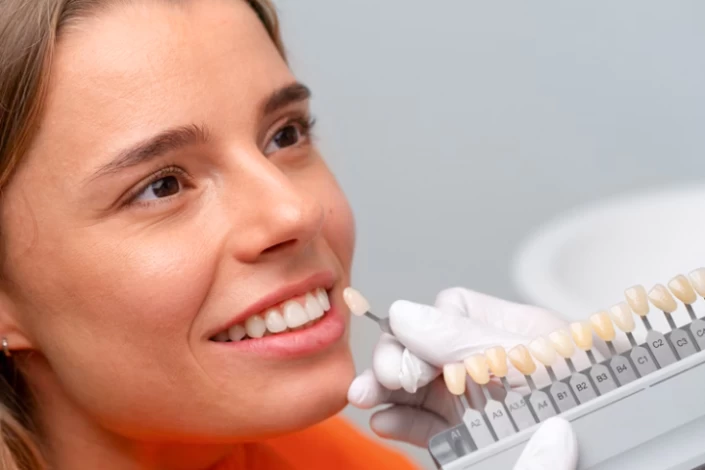
Stage 3: Final Restoration (Crown Placement) - After Month 6
Once the healing period is complete, your dentist will replace the temporary crown or restoration with the final restoration. Depending on your specific needs, the final restoration can be a crown, bridge, or denture. It is custom-made to match your natural teeth' colour, shape, and size, ensuring a seamless and natural-looking result.
After the final restoration is placed, your dentist will check your bite to ensure proper alignment. Any necessary adjustments will be made to ensure a comfortable and functional bite. You will also be scheduled for regular follow-up appointments to monitor the health and stability of the implant.
How to Ensure a Smooth Dental Implant Healing Process?
Tips for ensuring a smooth recovery after dental implants may include:
- Follow the dentist's instructions: After the surgery, your dentist will give you specific instructions on how to care for your dental implant. It is important to follow these instructions closely to ensure proper healing. This may include avoiding certain foods, practicing good oral hygiene, and taking prescribed medications.
- Maintaining good oral hygiene: Keeping your mouth clean is essential for successful dental implant healing. Brush your teeth gently, including the implant area, using a soft-bristle and non-abrasive toothpaste. Floss carefully around the implant, not irritating the surgical site.
- Avoid smoking: Smoking can negatively impact the healing process and increase the risk of complications. It is highly recommended to avoid smoking or using any tobacco products during the healing period.
- Consuming a balanced diet: Foods rich in nutrients are key to supporting the healing process after dental implant surgery. Initially, focus on soft and easily chewable foods, gradually reintroducing firmer foods as your dentist advises. Minimize physical activity: Avoid strenuous activities and exercise for a few days after dental implant surgery. Physical activity can increase bleeding and delay the healing process. Listen to your body and rest as needed to promote optimal healing.
- Prevent infection: To minimize the risk of infection, rinse your mouth with a saline solution or prescribed mouthwash as directed by your dentist. Avoid touching the surgical site with your fingers or tongue, and do not consume hot or spicy foods that could irritate the area.

What Are the Potential Complications of Dental Implants?
While dental implants are generally safe and successful, with a high success rate, it's important to be aware that complications can occur in some cases. These potential complications may include:
- Infection: Infection around the dental implant site can occur during or after the surgery. Dental implant infection can cause pain, swelling, and discomfort and may require additional treatment, such as antibiotics or implant removal;
- Nerve Damage: During the placement of dental implants, there is a risk of damaging the surrounding nerves. It's important to note that in most cases, this complication is temporary, reassuring that any numbness, tingling, or loss of sensation in the lips, tongue, or chin will likely resolve over time. In rare cases, it can be permanent. Implant Failure: Dental implants can sometimes fail to integrate properly with the jawbone, leading to failure. This can be due to inadequate bone quantity or quality, excessive forces applied to the implant, or poor oral hygiene. If an implant fails, it may need to be removed and replaced;
- Sinus Problems: Dental implants placed in the upper jaw can sometimes protrude into the sinus cavity, leading to sinus problems such as sinusitis or sinus infections. This can cause pain, congestion, and breathing difficulties. In some cases, a sinus lift procedure may be required to create more space for the implant;
- Gum Recession: In some cases, the gum tissue around a dental implant may recede over time, exposing the implant or the implant crown. This can cause aesthetic concerns and may require a gum graft procedure to restore the appearance and stability of the implant;
- Allergic Reactions: Some individuals may experience an allergic reaction to the materials used in dental implants, such as titanium or certain types of dental cement. Allergic reactions can cause swelling, irritation, or implant failure.
How Do I Know If My Dental Implant is Healing Correctly?
Several signs and symptoms can indicate whether your dental implant is healing correctly. Some may be as follows:
- Minimal discomfort: Some discomfort and swelling are normal in the days following the implant placement surgery. However, if you experience severe or persistent pain that does not improve with pain medication, it may be a sign of a complication;
- Minimal swelling: Swelling around the implant site is common after surgery but should gradually decrease. If the swelling worsens or does not improve, it could be a sign of infection or another issue;
- Healthy gum tissue: The gum tissue around the implant should appear pink, firm, and healthy. If you notice redness, swelling, or bleeding around the implant site, it may indicate an infection or inflammation;
- Stable implant: A stable implant is essential for successful healing. If you notice any movement or mobility of the implant, it could be a sign of implant failure or poor integration with the bone;
- Normal bite and functionality: As the healing progresses, you should be able to eat and speak comfortably with the implant. If you experience difficulty chewing, biting, or speaking, it may indicate an issue with the implant.
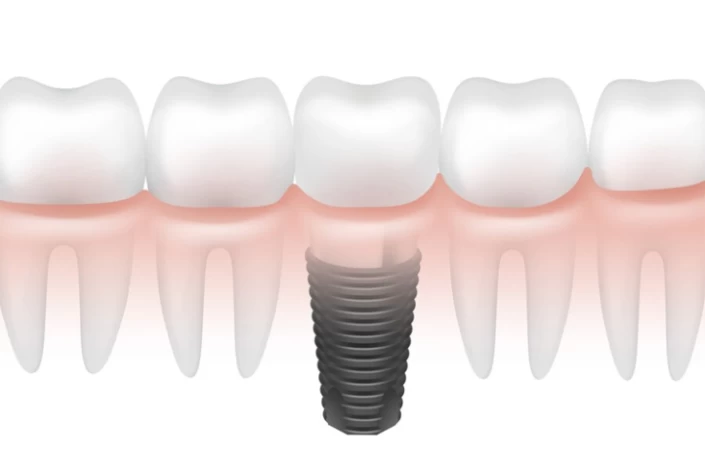
What Factors Impact the Dental Implant Recovery Time?
Several factors can influence the recovery time of dental implant surgery, including:
- The number of implants: Although some implants may have varying healing times, many patients choose to have all their implants placed at once to streamline the recovery process;
- The location of the dental implants: The healing duration can differ based on the placement location, with lower jawbone implants generally healing faster than those in the upper arch;
- Bone grafting is a procedure that can significantly impact recovery time. The graft site must fully heal before implant placement, which can take several months and potentially delay the overall process. Hygiene and health habits: Smoking, alcohol consumption, and inadequate oral care practices can prolong the recovery period.
The body's healing rate is a significant factor in the recovery process. While overall health can influence healing speed, factors like age and genetics also play a role in the recovery process.
Dental Implants in Iran
With easy access through major international airports and a multilingual staff that can communicate effectively with international patients, Iran has become a popular destination for individuals seeking cost-effective, high-quality dental implant treatments in a welcoming and culturally rich environment.
The affordability of dental implant procedures in Iran, compared to Western countries, makes it an attractive option for individuals seeking top-notch dental treatments without breaking the bank. Moreover, the well-established healthcare system in Iran, coupled with highly trained and skilled dental professionals who have received education and training from reputable institutions worldwide, ensures that patients receive excellent care and results.
Furthermore, Iran's dental clinics are equipped with advanced technology and state-of-the-art facilities, ensuring patients receive high-quality care. This allows for advanced and precise dental implant procedures. The country's tourism opportunities also play a role in attracting patients, as they can combine their dental treatments with exploring Iran's rich history, culture, and attractions.
Final Words
Taking care of your dental implants ensures their longevity and durability. By following tips for long-term care, such as brushing twice a day, flossing at least once a day, attending regular check-ups with your dentist, and avoiding harmful habits like smoking, you can help ensure that your implants endure for a lifetime. Remember, investing time and effort into caring for your implants will pay off in the long run, allowing you to enjoy a healthy and beautiful smile for years.
FAQs About the Dental Implant Healing Stages
How long after dental implants can I eat normally?
Generally, you may need to follow a soft food diet for the first few days after the implant surgery to allow the surgical site to heal without any complications. Your dentist will provide specific guidelines on when you can gradually transition back to eating normally based on your healing progress.
How long after dental implants can I drink alcohol?
It is generally recommended to avoid drinking alcohol for at least 24 to 48 hours after dental implant surgery. Alcohol can interfere with the healing process, increase the risk of bleeding, and potentially interact with any pain medications or antibiotics you may be taking post-surgery.
How long does full mouth dental implant healing time take?
The healing time for a dental implant to fully integrate with the jawbone can vary depending on various factors, including the individual's overall health, the bone quality, and the complexity of the implant procedure. Generally, it can take three to six months for a dental implant to heal fully and become stable enough to support a permanent restoration such as a crown, bridge, or denture.
Why is there no dairy after a dental implant?
Avoiding dairy products after dental surgery is crucial because they can harbour bacteria and lead to inflammation. Dairy items such as milk, cheese, and yogurt contain compounds like casein that may irritate the implant site and hinder healing.
How much pain should I expect during the dental implant recovery?
In the first few days after dental implant surgery, mild to moderate pain and discomfort are expected. The pain level may vary depending on your tolerance and the complexity of the surgery.
When can I resume my normal activities after dental implants?
Most patients can return to daily routines within one to two days following dental implant surgery. However, it is crucial to refrain from engaging in rigorous activities and lifting heavy objects for at least a week after the dental implant, as they could elevate blood pressure and lead to bleeding at the implant site.

 WhatsApp
WhatsApp
 Telegram
Telegram
 Facebook
Facebook
 Email
Email

No reviews
Your comment